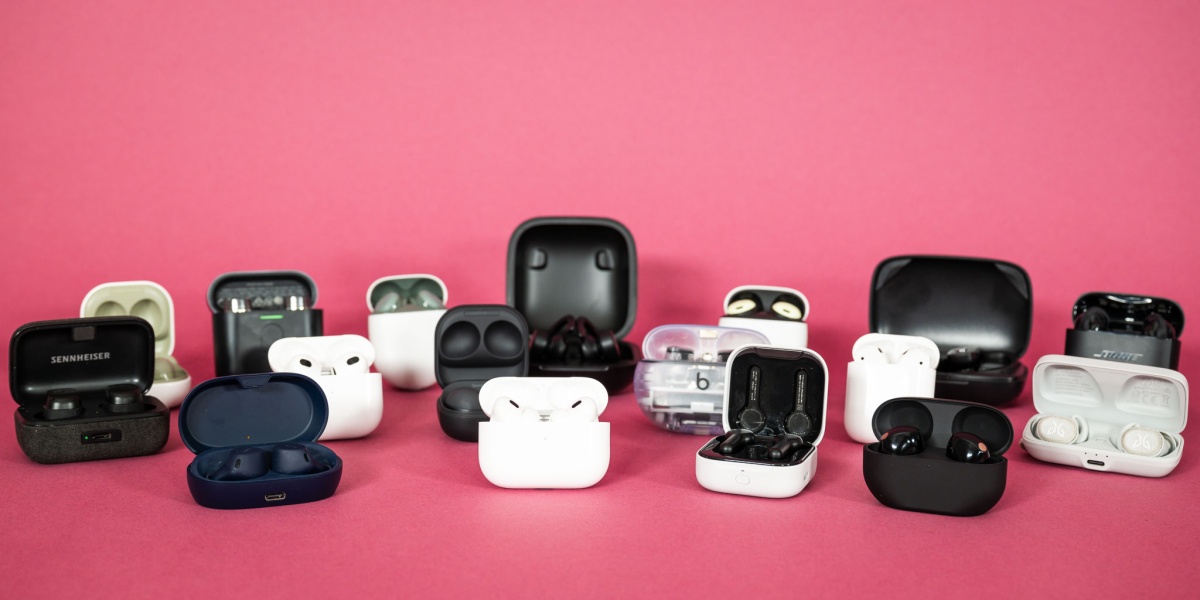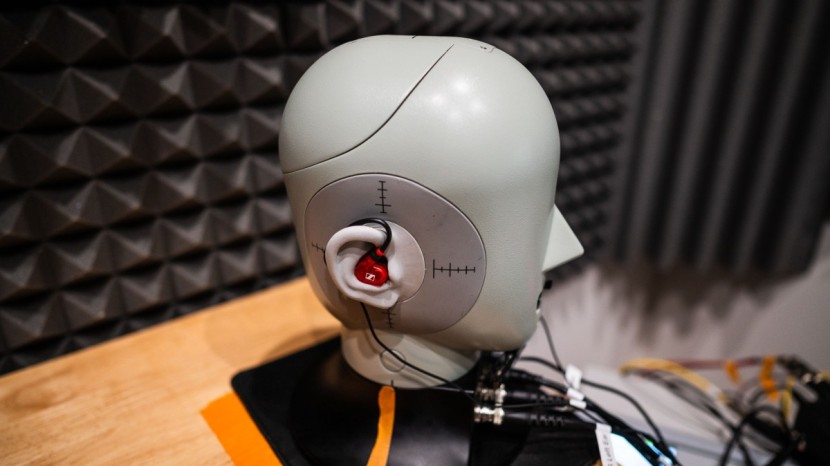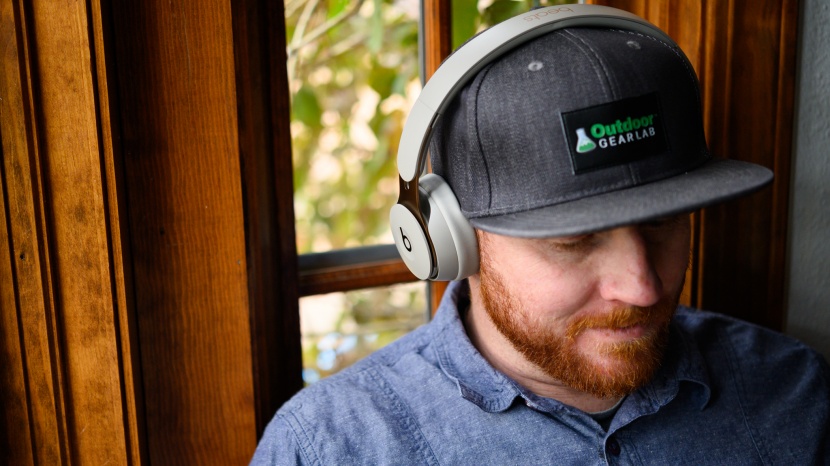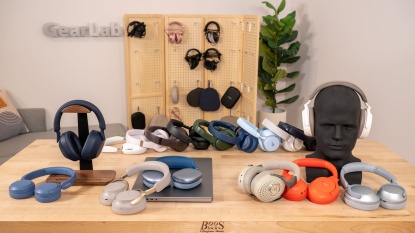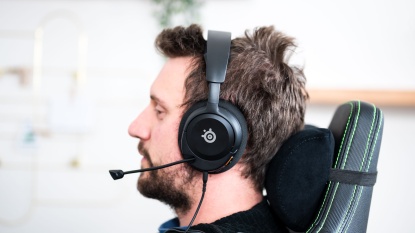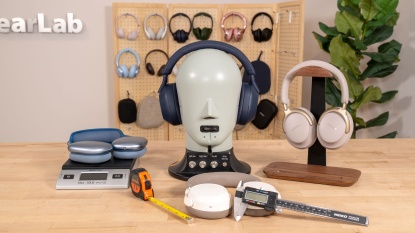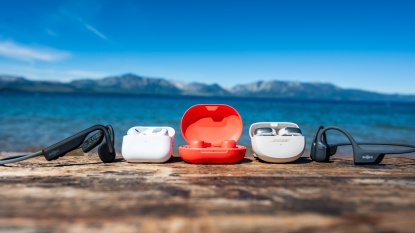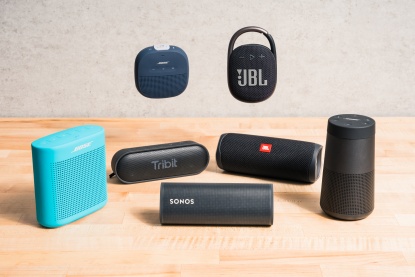Why Frequency Response Matters
Fans covet live music for a reason. It's an unfiltered, unedited expression, and it's glorious. Capturing and transmitting that sound through a speaker unaltered is significantly more complicated. Depending on the quality of the recording and your sound delivery system, the relative volume of the bass, mid-range, and treble frequencies could change quite a bit by the time they reach your ears. These shifts can alter the composition subtly or drastically. It can even transform the sound of a speaking voice or individual instruments.
One way to test if your headphones, earbuds, or speakers are translating your favorite music accurately is to listen and judge for yourself. However, it may be hard to tell unless you're a practiced audio pro, like our esteemed test team. It will probably be harder to pinpoint what's wrong and find an alternate pair that avoids the same mistake.
An Introduction to Frequency Response
Luckily, there's a reliable, objective method to assess how faithfully a speaker reproduces sound, and that is by measuring its frequency response. Usually shown as a curve on a graph, frequency response tracks how much the speaker emphasizes or suppresses each audible frequency, from low-bass notes to high-pitched treble tones. These curves let you visualize the sound signature, or sound balance, of a set of headphones or wireless earbuds.
The curve charts amplitude on the x-axis in decibels (dB) and frequency on the y-axis in hertz (Hz). If a set of speakers accurately reproduced the sound of a live band or studio recording exactly as the artists and producers intended it, a frequency response curve would be more-or-less flat, correlating with the reference line.
The reference line is set to zero decibels, but that doesn't mean you can't hear frequencies that dip below it. Decibels are relative. Think of the reference line as a neutral balance that would work well if your favorite band was in the room with you or being played through high-quality floor speakers in front of you. You'll need to adjust the frequency balance to recreate that balance in small speakers placed in or over your ears.
Where the curve crosses above the reference line, the frequencies are relatively louder. Where it dips below the line, the tones are softer. If a set of headphones or earbud speakers turns the bass up a bit, the curve will register a peak in the lower frequencies. If it turns down the mid-tones, the curve will drop below the reference line.
Decibels are also logarithmic. Logarithmic scales help us communicate large value ranges using numbers that are small enough to grasp. For example, if you're listening to music at 40 decibels and then crank it up to 50 decibels, that is 10 times more intense than the initial sound. Increasing the volume again to 60 decibels is 100 times louder than the initial sound at 40 decibels.
What Affects A Frequency Response Curve?
It's challenging to achieve an ideal frequency curve in small and complex equipment like headphones and earbuds. Their placement, directly over or in your ears, makes it difficult to recreate the sound as we would hear it in a natural environment. Also, due to their small size, creating the strong vibrations required for thumping bass is very challenging.
Earbuds Versus Headphones
Though there is no consensus across the industry, it makes sense that an ideal frequency curve that works well for earbuds might not work well for headphones. That's because they interact with your ears in very different ways. Here's a quick rundown of the disparities:
Location — Earbuds sit directly inside your ear, often sealing your ear canal with a flexible ear tip. As a result, they deliver sound directly to your eardrum, eliminating the natural interaction with the outer structure of your ear, known as the pinna. This changes both how the sound waves move and how you perceive them.
To compensate, the frequency response curves of earbuds tend to boost sections of bass, mid-range, and treble frequencies to make up for the missing resonance the outer ear would normally create. Without this, the bass and mid-range can sound thin and weak, and treble notes can feel muted and lifeless.
In contrast, headphones rest over your ears, allowing the sound waves they produce to interact with the pinna before reaching the ear canal. This is a more natural way for sound waves to enter the ear, automatically enhancing mid and high frequencies. As a result, headphones tend to require smoother, less sculpted frequency response curves to sound accurate.
So far, GearLab has found that the best-sounding earbuds and headphones will have slightly different ideal frequency response curves.
How Sound Waves Work
Sound comes at us in waves. The height of each wave, or its amplitude, determines how loud it seems. Amplitude is the strength of a signal and is measured in decibels (dB). Frequency measures how many of those waves pass by in a second, which is expressed in hertz (Hz). Slow waves with lower frequencies (from 20 to 200 Hz) are called bass notes. Faster waves (from 2 to 20 kHz) are high treble tones. Everything else is referred to as a “middle” frequency. The total range, from 20 Hz to 20 kHz, represents the audible range for a healthy human ear.
If you want to play around with the relationship between amplitude and frequency, we can't think of a better place on the internet than this excellent interactive guide from The Pudding. For extra credit, check out the “Phase” section to learn how noise-canceling headphones work.Fit and Seal — While earbuds and headphones benefit from an ambient sound-blocking seal, it's much more important for in-ear models. A proper seal allows them to produce strong and accurate basslines and isolate you from surrounding sounds. Since they struggle to produce powerful, low frequency sounds, the frequency response curve is often elevated in the bass range to help them compensate.
Note that a poor fit will also change the measured frequency response, for better or worse. Luckily, many earbuds come with multiple tip sizes to fit different ear shapes for the perfect seal.
Over the ear headphones have an easier job. Comparatively, they have much more room to work with, don't struggle as much to build strength in the low notes, and don't need to elevate the curve as much in those ranges as a result.
Driver Size — Headphones are also larger, giving them more room to work with in terms of speaker placement and the size and power of their internal electronics, like their driver. A driver is an element that converts digital electronic signals into sound waves using a diminutive vibrating diaphragm. Think of it as a very small speaker.
The drivers in earbuds are smaller, displacing less airwith each vibration, thus creating less pressure and volume, making building a robust bass sound especially difficult. As technology improves, these differences are less pronounced.
In summary, the larger, more powerful drivers in headphones, and their interactions with the outer ear, result in a more balanced sound profile, reducing the need to adjust the frequency response curve to achieve a natural sound.
In contrast, earbuds' small size and in-ear placement benefit from a few more tweaks to the frequency response curve to compensate for their smaller drivers and the lack of resonance from the outer ear.
Ear Health
Your age and the function of your ears also affect perceived headphone performance. A healthy human ear can hear frequencies from 20 Hz to 20 kHz (or 20,000 Hz). If you live in a city, work in a loud environment, attend concerts often, blast your headphones, or just use your ears for a long time, your hearing range could be significantly limited. You may prefer headphones that boost levels in the frequency ranges that are harder for you to hear.
Adjustable Bass, Mid, and Treble
Like a photo filter, a speaker's frequency response curve makes the same set of alterations to every sound passing through. Many headphones and earbuds also allow you to adjust frequency levels, a process known as equalizing (EQ) the curve. Essentially, you raise or lower the relative strength/volume of bass or treble frequencies, like the sliders on old-school stereos. Theoretically, you could use these controls to cancel out the speaker's inherent curve. However, the best speakers we've tested already make the material sound great and don't force you to reproduce your favorite compositions.
Preferences and Practice
In the end, it all comes down to preference. You may prize an authentic reproduction above all else if you have a refined ear. Or, you may have specific tastes and are searching for speakers that tweak every track to match them.
Research by the company Harman has found a few general patterns in listener preferences. In its research, Harman found that less experienced listeners tend to like more bass and treble than experienced audio critics. Older listeners also prefer lower bass and treble levels until age 56. After that, they like more treble but even less bass, possibly due to dulled audio receptors.
How you use your earbuds or headphones also matters. If you tend to listen to audiobooks or podcasts, you may want the mid-tones, between 100 and 300 Hertz, to shine. You'll appreciate a strong bass line if you mostly listen to movies or EDM. However, there could be too much bass, which may be all you can hear.
Enhancing the treble ranges a bit can pull out detail; too much tends to sound tinny. Keep in mind that high-quality sound is much more important if you are a gamer or a critical listener. If you're jamming out during a run or a subway ride, other factors like comfort and noise isolation might come before sound quality.
Think of it like pizza. Pretty much everyone likes pizza, just like pretty much everyone likes music. But not everyone agrees on what makes a pizza, or a song, truly great. The right pair of headphones will blend the right amount of bass (crust), middle (sauce), and treble (cheese) to create your perfect slice. It should also highlight your favorite instruments, or at least not drown them out. If you like the soprano sax, for example, you don't want to lose those easy-to-overlook mid-frequencies.
That said, the best pizzerias produce a product that nearly everyone can get behind. The same is true for earbuds and headphones. If you're not sure what you like, the Sound Gym is a great place to brush up on your critical listening skills.
GearLab's House Curve
This entire discussion begs the question, is there a perfect frequency response for earbuds or headphones? And, if so, what do they look like? Researchers have been working for over a decade to answer these questions, and, well, they really haven't. But, while there is no one “correct” frequency response curve for any one type of speaker, we have an informed idea of what a good one looks like, thanks to the pioneering Harman Curve.
Named after the company that funded the research and employed the researchers who created it, the Harman Curve is a “target response” curve created by cross-referencing listener preferences with frequency curve data. If the frequency response curve of a set of headphones is similar to this popular sound signature, chances are, most people will like how it sounds. One of Harman's main findings is that smooth, arcing frequency curves create less perceptible changes to the overall composition than those with sharp or isolated dips or peaks.
While the original Harman Curve was created in 2012, it's a moving target, with additional data informing subsequent updates to the curve. For example, it was originally created with over-ear headphones in mind. Newer versions are tailored for in-ear models. More recently, other companies and review sites have released their own curves.
Clearly, finding the ideal frequency response curve for headphones and earbuds has become a communal conversation, and we've stepped up to the plate. To allow us to give you the best information about the earbuds and headphones we've tested, we created our own Gear Lab target response curves, aka the House Curves. And we have two slightly different versions, one for earbuds and the other for headphones.
To dive into the details of how we created our House Curves and how we measure the frequency response of each set of headphones and earbuds we test, read our in-depth House Curve article. If you just want to know how to use the House Curves to find your perfect pair of earbuds, you're in the right place..
How the House Curve Informs Your Purchase Decisions
If you're new to audio or just don't have strong opinions about specific frequency levels, look for options with frequency curves that closely track the relevant Gear Lab House Curve. Both House Curves correlate well with the famed Harman Curve, so there's a lot of weight, history, and research behind our top picks. If you're looking for expert advice about which headphones will sound the best for most people, that's a great place to start.
Check out the chart above for an example. It shows the frequency response curve of the high-scoring Bose QuietComfort Ultra Earbuds alongside the lower-scoring Bmani Sport buds. As you can see, the Bose example closely follows our earbud House Curve, indicating that it will sound much better than the deviating Bmani option for most people.
If you're a more discerning listener and have access to a set of headphones or earbuds already, try collecting a bit more data on your own. Complete a few exercises at the Sound Gym, taking notes on how your headphones sound to you.
If you find elements lacking, see if there are equalizing (EQ) controls or presets that let you adjust the levels of each frequency range. If you like a bit more bass on average than our curve might suggest (a common preference for younger adults), look for earbuds that match your need for booming lows. Ultimately, increasing your critical listening skills and sound vocabulary is the best way to get the ideal sound signature for you in the long run.
If you're more experienced and already know that you love rich mid-tones or turned-up treble, look for curves with a peak in those frequencies. But be sure to read our notes about those picks. They could do more than just turn up the bass and throw off the entire composition.
Conclusion
A bad frequency response curve can result in a mix that the original composer or audio engineer would hardly recognize. There's nothing worse than buying an audio system that doesn't do your music justice. Luckily, we've found that the best headphones and earbuds deliver a consistent sound balance that works well for a wide range of genres and musical tastes.
Even better, the earbuds and headphones with the best sound signatures also stand out early in the competition. Then, we can cross-reference our impressions by measuring their frequency curves and comparing them to the House Curve we created. The robust process gives us a lot of confidence in our recommendations. Whether you're leaning on us to give you sound advice or you're someone who knows exactly what you're looking for, we've provided all the information you need to find it. Happy listening!
